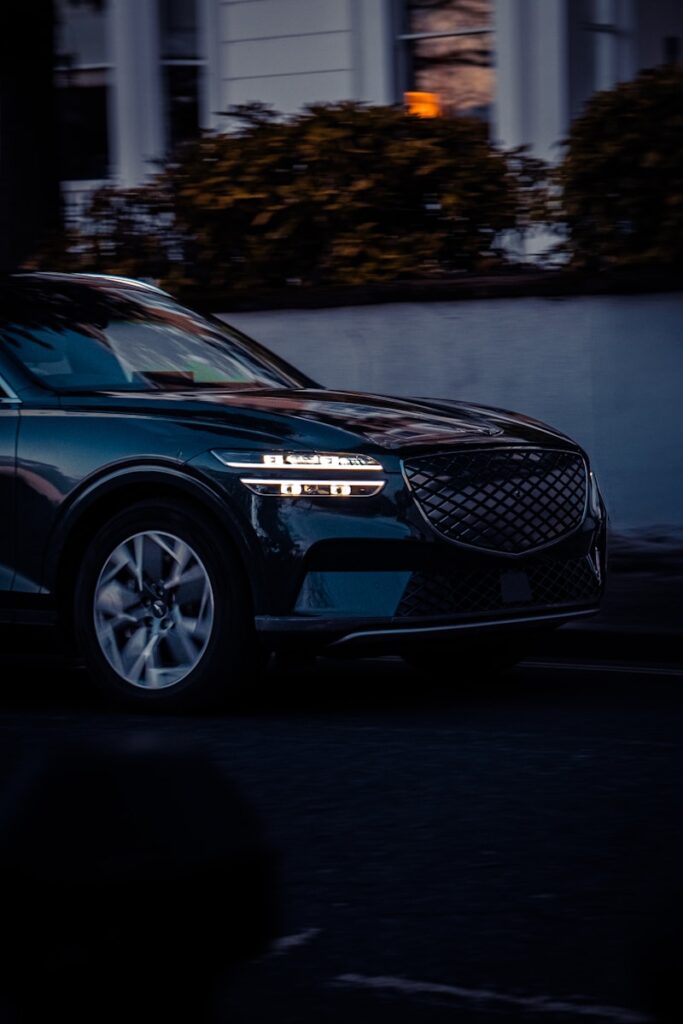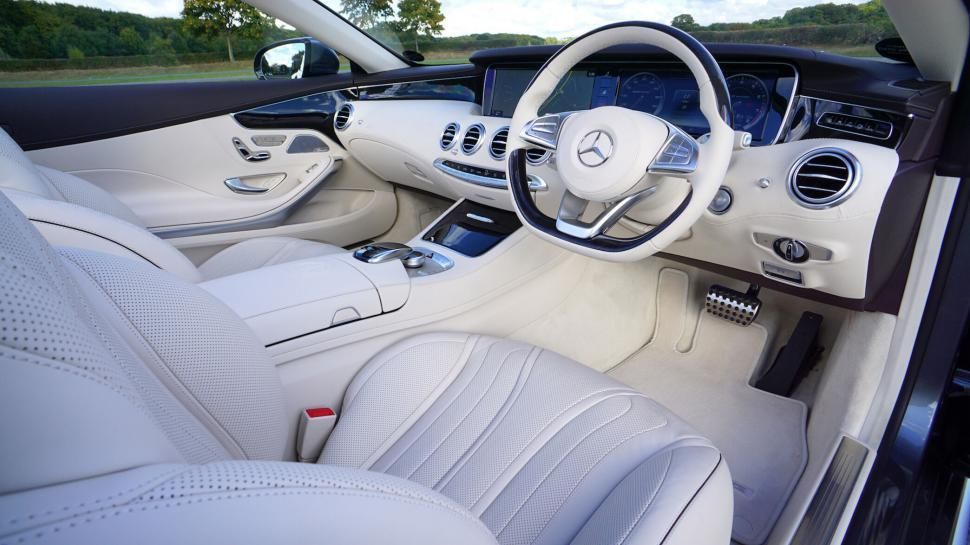
When embarking on the journey of car ownership, initial impressions often center on performance metrics, fuel economy figures, or the allure of exterior aesthetics. However, as the miles accumulate and the daily commute becomes a routine, a single, often overlooked detail rises to paramount importance: the interior comfort. This isn’t just about plush seats or fancy infotainment; it’s about the tangible experience of spending hours within a vehicle, where discomfort can transform a simple drive into a genuine nightmare.
For many consumers, the expectation is that a car, regardless of its primary purpose, should provide a degree of solace and ergonomic support. Unfortunately, not every vehicle lives up to this ideal. Some cars, despite their robust engines or impressive off-road capabilities, fall significantly short in their interior design, leading to complaints ranging from cramped seating arrangements to insufficient lumbar support and pervasive cabin noise. These shortcomings are not mere inconveniences; they directly impact driver fatigue, passenger satisfaction, and the overall enjoyment of the driving experience, especially on extended trips.
In this in-depth analysis, guided by the principles of objective and unbiased evaluation, we delve into a selection of vehicles that have frequently drawn criticism for their interior comfort. Our goal is to provide prospective car buyers with detailed, practical insights, highlighting specific issues that owners have consistently reported. By examining these models, we aim to empower readers to make informed purchasing decisions, ensuring that their next vehicle offers not just performance and reliability, but also the enduring comfort essential for long-term satisfaction. Let’s explore the first half of our list, uncovering the specific interior challenges that have left many owners wishing for a more comfortable ride.
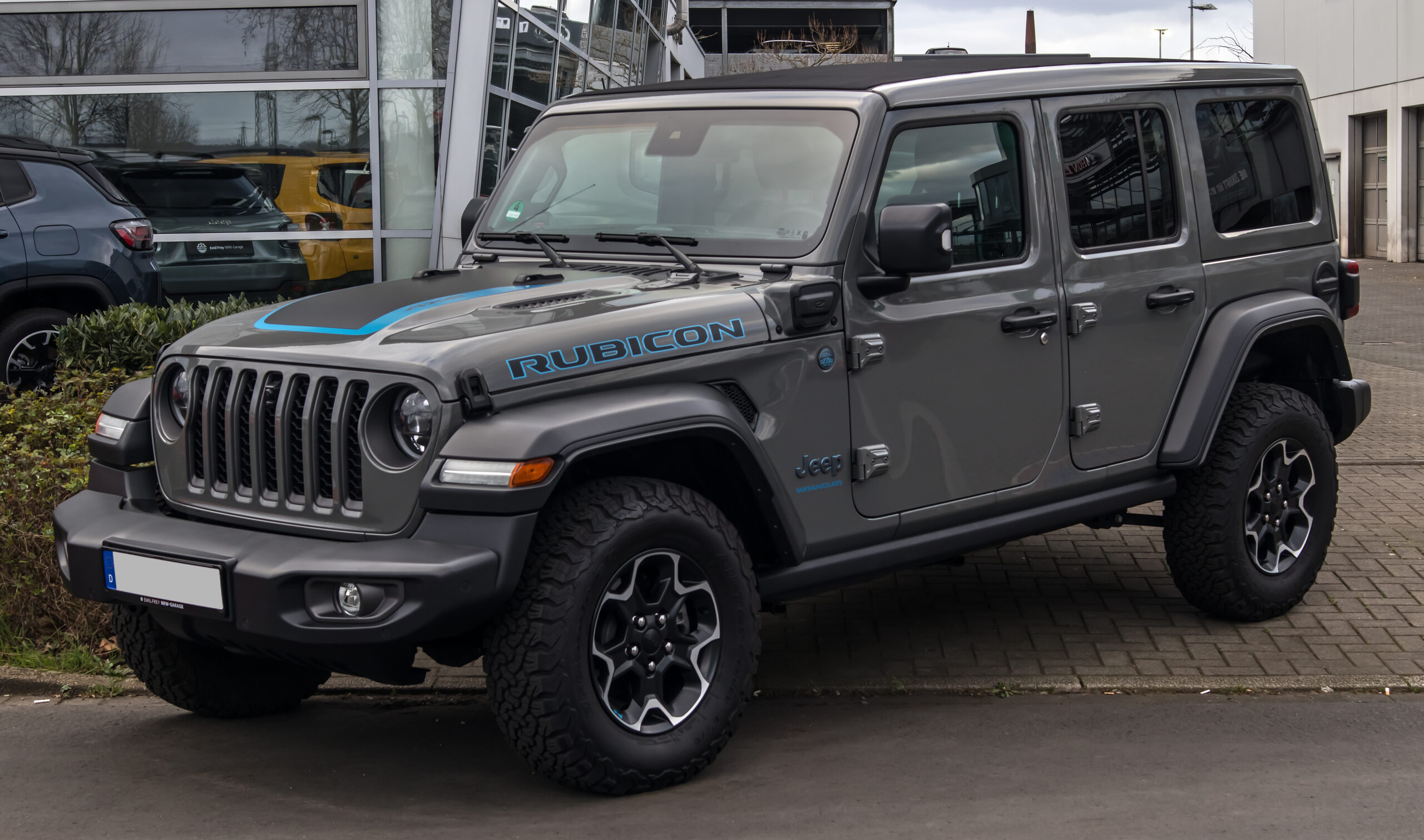
1. **Jeep Wrangler**The Jeep Wrangler is undeniably a titan in the off-road segment, celebrated for its rugged durability and ability to conquer virtually any terrain. Yet, this very focus on extreme capability often translates into significant compromises within the cabin, making it a less-than-ideal companion for daily commutes or extended highway drives. The design, prioritizing resilience and adventure, inevitably leads to an interior environment that feels unrefined when compared to vehicles built primarily for on-road comfort.
Owners frequently point to the seats as a primary source of discomfort. They are characterized as firm, providing minimal lumbar support, which can become particularly noticeable and irritating during longer journeys. The upright and stiff seating position, while perhaps offering a commanding view of the trail, contributes to a sense of rigidity that prevents drivers and passengers from settling into a truly relaxed posture. This ergonomic oversight means that what might be tolerable for a short off-road excursion quickly becomes fatiguing over many hours.
Beyond seating, the Wrangler’s design philosophy, featuring removable doors and roof panels, has a direct and detrimental impact on cabin acoustics. Road and wind noise are significant issues, often permeating the interior with an intensity that makes conversation difficult and exacerbates driver fatigue. This constant auditory intrusion, especially at higher speeds, detracts considerably from the comfort of the ride, transforming what should be a peaceful journey into a noisy endurance test. For those who anticipate regular long-distance travel, the Wrangler’s interior, while perfectly suited for its rugged purpose, may prove to be a persistent source of discomfort.
Car Model Information: 2019 Jeep Wrangler Sport S
Name: Jeep Wrangler
Caption: Jeep Wrangler Unlimited, Sahara edition
Manufacturer: Jeep
Class: Compact SUV
Production: 1986–present
Predecessor: Jeep CJ
Layout: Front-engine, rear-wheel-drive layout,rear-wheel drive
Chassis: Body-on-frame
Related: AIL Storm
Categories: 1980s cars, 1990s cars, 2000s cars, 2010s cars, All-wheel-drive vehicles
Summary: The Jeep Wrangler is a series of compact and mid-size four-wheel drive off-road SUVs manufactured by Jeep since 1986, and currently in its fourth generation. The Wrangler JL, the most recent generation, was unveiled in late 2017 and is produced at Jeep’s Toledo Complex.
The Wrangler is a direct progression from the World War II Jeep, through the CJ (Civilian Jeeps) produced by Willys, Kaiser-Jeep, and American Motors Corporation (AMC) from the mid-1940s through the 1980s. Although neither AMC nor Chrysler (after it purchased AMC in 1987) have claimed that the Wrangler was a direct descendant of the original military model — both the CJ Jeeps and the conceptually consistent Wrangler, with their solid axles and open top, have been called the Jeep model as central to Jeep’s brand identity as the rear-engine 911 is to Porsche.
Similar to the Willys MB and the CJ Jeeps before it, all Wrangler models continue to use a separate body and frame, rigid live axles both front and rear, a tapering nose design with flared fenders, a fold-flat windshield, and can be driven without doors. Also, with few exceptions, they have part-time four-wheel drive systems, with the choice of high and low gearing, and standard open bodies with removable hard or soft tops. However, the Wrangler series was specifically redesigned to be safer and more comfortable on-road, to attract more daily drivers, by upgrading its suspension, drivetrain, and interior, compared to the CJ line. The suspension on all Wranglers included trackbars and anti-roll bars, and, from the 1997 TJ onwards, front and rear coil springs instead of the previous leaf springs.
From 2004 on, the Wrangler has been complemented with long-wheelbase versions, called Wrangler Unlimited. 2004-2006 models were longer versions with 2 doors. In 2004, only automatic transmission-equipped “Unlimited” versions were sold. In 2005, both an automatic and manual 6-speed (NSG-370) were offered. Since 2007, the long-wheelbase Wranglers were four-door models, offering over 20 in (508 mm) more room. By mid-2017, the four-door models represented three-quarters of all new Wranglers on the market.
Get more information about: Jeep Wrangler
Buying a high-performing used car >>>
Brand: Jeep Model: Wrangler
Price: $24,082 Mileage: 52,780 mi.
Read more about: Where Did They Go? 14 Beloved Automotive Icons That Vanished from Our Roads, Stirring Nostalgia and Sparking Curiosity
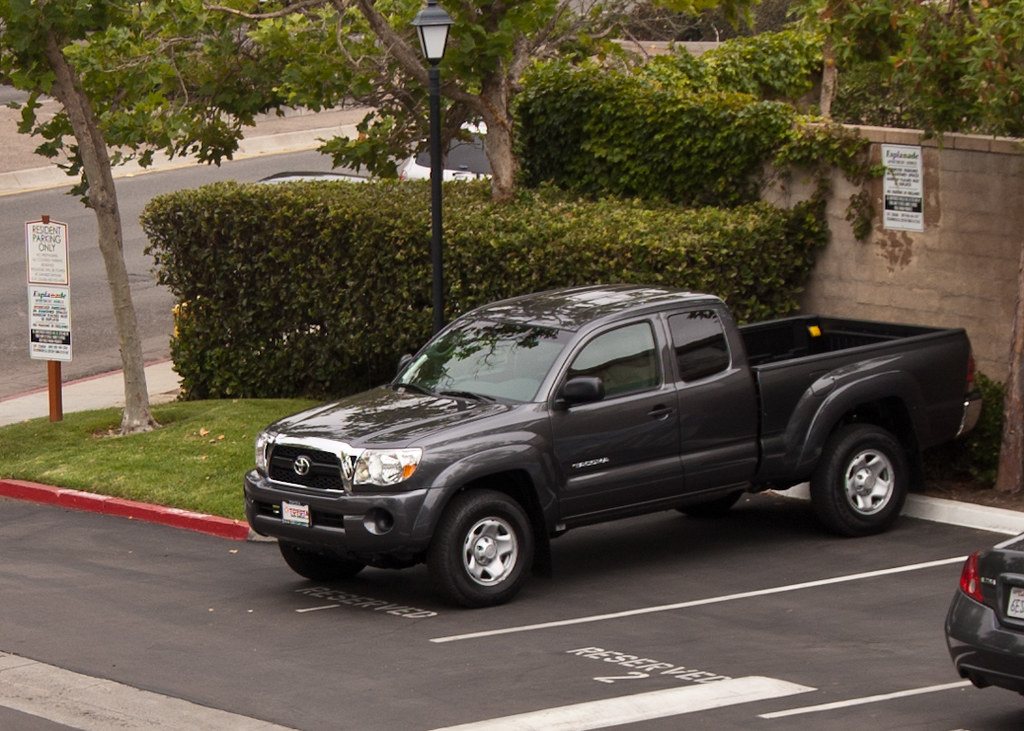
2. **Toyota Tacoma**The Toyota Tacoma has cemented its reputation as a benchmark for reliability and impressive off-road performance within the mid-size pickup truck segment. Its mechanical fortitude and robust build quality are often lauded by owners who demand a dependable workhorse or an adventurous companion. However, beneath its rugged exterior and storied dependability, the Tacoma’s interior often fails to deliver the comfort levels that modern drivers and passengers have come to expect, especially when embarking on long drives.
A recurring complaint among owners, particularly those who are taller, is the tight legroom, which is notably pronounced in the rear seats. This spatial constraint can make the back of the Tacoma an uncomfortable, if not impractical, space for adult passengers on any journey beyond a quick trip across town. Even in the front, while generally more accommodating, taller individuals might find themselves longing for more room to stretch out, a critical factor for maintaining comfort during extended periods behind the wheel.
The seating itself also contributes significantly to the Tacoma’s comfort shortcomings. Owners commonly describe the seats as stiff and lacking sufficient padding, an issue that becomes increasingly problematic as the miles accumulate. This deficiency in cushioning means that pressure points can develop, leading to discomfort and soreness on long trips. Furthermore, older models of the Tacoma are frequently criticized for their lack of substantive interior updates, a factor that only highlights the vehicle’s persistent inability to match the evolving standards of cabin comfort seen in many of its contemporaries. For a truck celebrated for its ability to go anywhere, its interior sometimes suggests that getting there might not be as comfortable as one might hope.
Car Model Information: 2019 Toyota Tacoma SR5
Name: Toyota Tacoma
Caption: 2020 Toyota Tacoma TRD Off-Road
Manufacturer: Toyota
Production: January 1995 – present
ModelYears: 1995–present
Class: unbulleted list
Layout: Front-engine, rear-wheel-drive layout
Predecessor: Toyota Hilux (N80)
Categories: 2000s cars, 2010s cars, 2020s cars, All-wheel-drive vehicles, All Wikipedia articles written in American English
Summary: The Toyota Tacoma is a pickup truck manufactured by Japanese automobile manufacturer Toyota since 1995. The first-generation Tacoma (model years 1995 through 2004) was classified as a compact pickup; subsequent models are classified as mid-sized pickups. The Tacoma was Motor Trend’s Truck of the Year for 2005.
As of 2015, the Tacoma was sold in the United States, Canada, Mexico, Costa Rica, Bolivia, Bermuda, and the French overseas collectivity of New Caledonia. Most markets across the world receive the Toyota Hilux in lieu of the Tacoma.
The name “Tacoma” was derived from the Coast Salish peoples’ name for Mount Rainier in the U.S. state of Washington.
Get more information about: Toyota Tacoma
Buying a high-performing used car >>>
Brand: Toyota Model: Tacoma
Price: $27,755 Mileage: 87,049 mi.
Read more about: Beyond the Quarter-Million Mark: Our Shortlist of Cars Engineered for Extreme Longevity
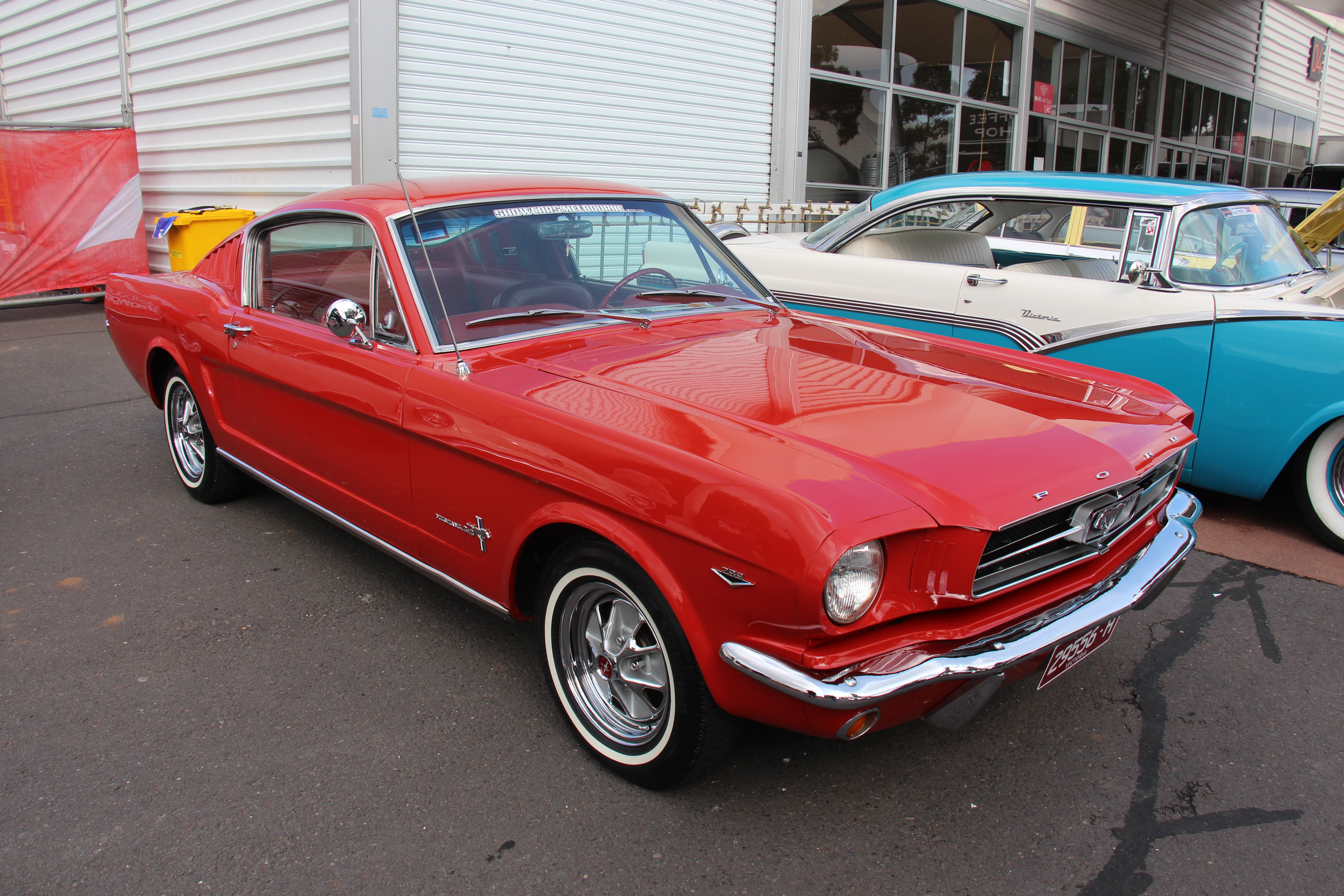
3. **Ford Mustang (older models)**The Ford Mustang, especially its older iterations, has always been synonymous with iconic American performance and a distinct sporty design that evokes a sense of raw power and driving excitement. This performance-oriented philosophy, however, often necessitated certain compromises in the vehicle’s interior, particularly in the realm of passenger comfort. While the allure of its aggressive stance and powerful engine is undeniable, the cabin experience, especially for everyday use or long journeys, frequently leaves much to be desired.
One of the most significant and consistent criticisms of older Ford Mustang models revolves around the rear seating. These back seats are notoriously cramped, rendering them largely impractical for adult passengers on anything but the shortest, most infrequent trips. Taller individuals, in particular, will find headroom and legroom to be severely limited, making the rear cabin more of a theoretical space than a functional one for human occupancy. This design choice highlights the Mustang’s primary focus: a driving machine for the driver and perhaps one front-seat passenger.
Furthermore, the front seats, while often providing good lateral support for spirited driving, are generally described as firm. This firmness, combined with a low-slung seating position designed to enhance the sporty feel, contributes to a less comfortable ride for everyday commuting or extended road trips. The lack of plushness or substantial cushioning means that drivers and front passengers can experience fatigue and discomfort after prolonged periods. For those seeking a blend of performance and comfortable cruising, older Mustangs often present a trade-off where exhilarating drives come at the expense of interior comfort, making long commutes or cross-country adventures a less enjoyable affair than their powerful engines might suggest.
Car Model Information: 1966 Ford Mustang Base
Name: Ford Mustang
Caption: 2024 Ford Mustang GT Convertible
Aka: Ford T5 (Germany)
Manufacturer: Ford Motor Company
Production: March 1964 – present
ModelYears: 1965–present
Class: Unbulleted list
BodyStyle: Unbulleted list
Layout: Front-engine, rear-wheel-drive layout
Categories: 1970s cars, 1980s cars, 1990s cars, 2+2 coupés, 2000s cars
Summary: The Ford Mustang is an American automobile manufactured and marketed by Ford since 1964, as Ford’s longest nameplate in continuous production. Currently in its seventh generation, it is the fifth-best selling Ford car nameplate. The namesake of the “pony car” automobile segment, the Mustang was developed as a highly styled line of sporty coupes and convertibles derived from existing model lines, initially distinguished by its pronounced “long hood, short deck” proportions.
Originally predicted to sell 100,000 vehicles yearly, the 1965 Mustang became the most successful vehicle launch since the 1927 Model A. Introduced on April 17, 1964 (16 days after the Plymouth Barracuda), over 400,000 units were sold in its first year; the one-millionth Mustang was sold within two years of its launch. In August 2018, Ford produced the 10-millionth Mustang; matching the first 1965 Mustang, the vehicle was a 2019 Wimbledon White convertible with a V8 engine.
The success of the Mustang launch led to multiple competitors from other American manufacturers, including the Chevrolet Camaro and Pontiac Firebird (1967), AMC Javelin (1968), and Dodge Challenger (1970). It also competed with the Plymouth Barracuda, which was launched around the same time. The Mustang also had an effect on designs of coupes worldwide, leading to the marketing of the Toyota Celica and Ford Capri in the United States (the latter, by Lincoln-Mercury). The Mercury Cougar was launched in 1967 as a unique-bodied higher-trim alternative to the Mustang; during the 1970s, it included more features and was marketed as a personal luxury car.
From 1965 until 2004, the Mustang shared chassis commonality with other Ford model lines, staying rear-wheel-drive throughout its production. From 1965 to 1973, the Mustang was derived from the 1960 Ford Falcon compact. From 1974 until 1978, the Mustang (denoted Mustang II) was a longer-wheelbase version of the Ford Pinto. From 1979 until 2004, the Mustang shared its Fox platform chassis with 14 other Ford vehicles (becoming the final one to use the Fox architecture). Since 2005, Ford has produced two generations of the Mustang, each using a distinct platform unique to the model line.
Through its production, multiple nameplates have been associated with the Ford Mustang series, including GT, Mach 1, Boss 302/429, Cobra (separate from Shelby Cobra), and Bullitt, along with “5.0” fender badging (denoting 4.9 L OHV or 5.0 L DOHC V8 engines).
Get more information about: Ford Mustang
Buying a high-performing used car >>>
Brand: Ford Model: Mustang
Price: $32,991 Mileage: 98,811 mi.
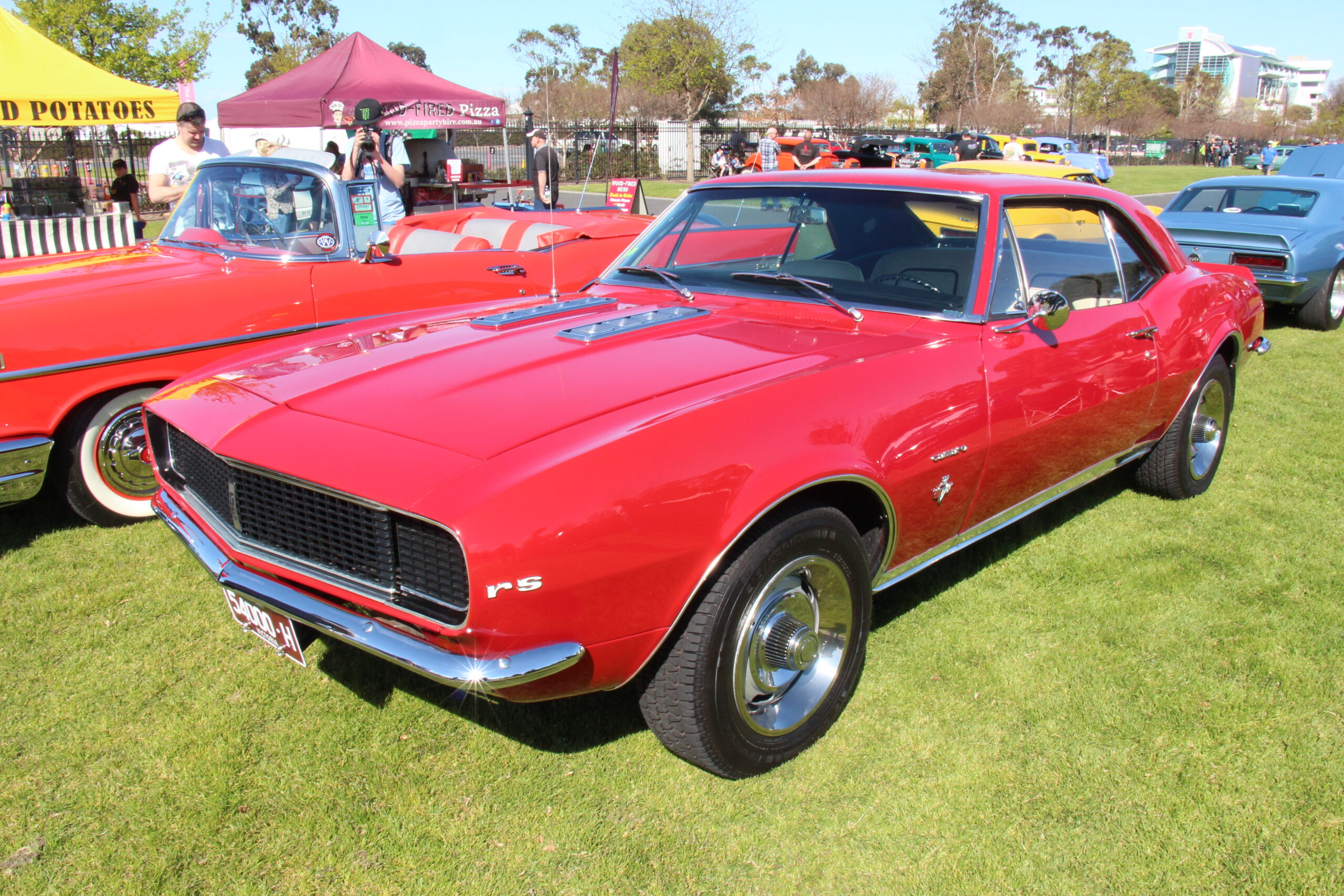
4. **Chevrolet Camaro**Much like its pony car rival, the Chevrolet Camaro commands attention with its aggressive styling and powerful presence. Its design language speaks to performance and a bold aesthetic, appealing to enthusiasts seeking a visceral driving experience. However, this dedication to a sleek, muscular exterior often comes with inherent limitations in interior comfort, presenting challenges that become more apparent during extended periods of driving or when carrying multiple passengers.
Central to the Camaro’s comfort issues is its distinctive low roofline. While visually appealing and contributing to its sporty profile, this design choice significantly limits headroom, an issue that is particularly problematic for taller drivers. Finding an optimal, comfortable driving position can be a persistent struggle, as the restricted vertical space forces some to compromise their posture, leading to discomfort over time. This architectural constraint underscores the priority given to exterior form over interior function for maximum occupant space.
Moreover, the rear seat space in the Chevrolet Camaro is, to put it mildly, minimal. It is often described as an afterthought, making it largely unsuitable for adult passengers on anything but the shortest trips. Children might find it tolerable for brief periods, but for anyone of average or taller height, the rear cabin becomes an exercise in contortion rather than comfortable travel. The front seats, while offering ample support during short, dynamic drives, can feel overly firm and notably lacking in adjustability for fine-tuning a comfortable position over extended periods. This combination of limited headroom, negligible rear space, and firm, less-adjustable front seating positions the Camaro as a formidable performance machine, but one where the journey itself might be less accommodating than its raw power suggests.
Car Model Information: 1968 Chevrolet Camaro
Name: Chevrolet Camaro
Manufacturer: Chevrolet
Production: 1966–2002,2009–2023
ModelYears: 1967–2002,2010–2024
Class: Pony car
BodyStyle: coupe,convertible
Platform: GM F platform,GM Zeta platform,GM Alpha platform
Layout: Front-engine, rear-wheel-drive layout
Categories: 1970s cars, 1980s cars, 1990s cars, 2+2 coupés, 2000s cars
Summary: The Chevrolet Camaro is a mid-size American automobile manufactured by Chevrolet, classified as a pony car. It first went on sale on September 29, 1966, for the 1967 model year and was designed to compete with the Ford Mustang. The Camaro shared its platform and major components with the Firebird, produced by General Motors’ Pontiac division that was also introduced for the 1967 model year.
Four distinct generations of the Camaro were developed before production ended in 2002. The nameplate was revived on a concept car that evolved into the fifth-generation Camaro; production started on March 16, 2009.
Production of the sixth generation of the Camaro ended in December 2023, for the 2024 model year.
Get more information about: Chevrolet Camaro
Buying a high-performing used car >>>
Brand: Chevrolet Model: Camaro
Price: $79,980 Mileage: 1,713 mi.
Read more about: 15 Classic Cars You Might Want To Skip: An Expert Guide for Discerning Collectors
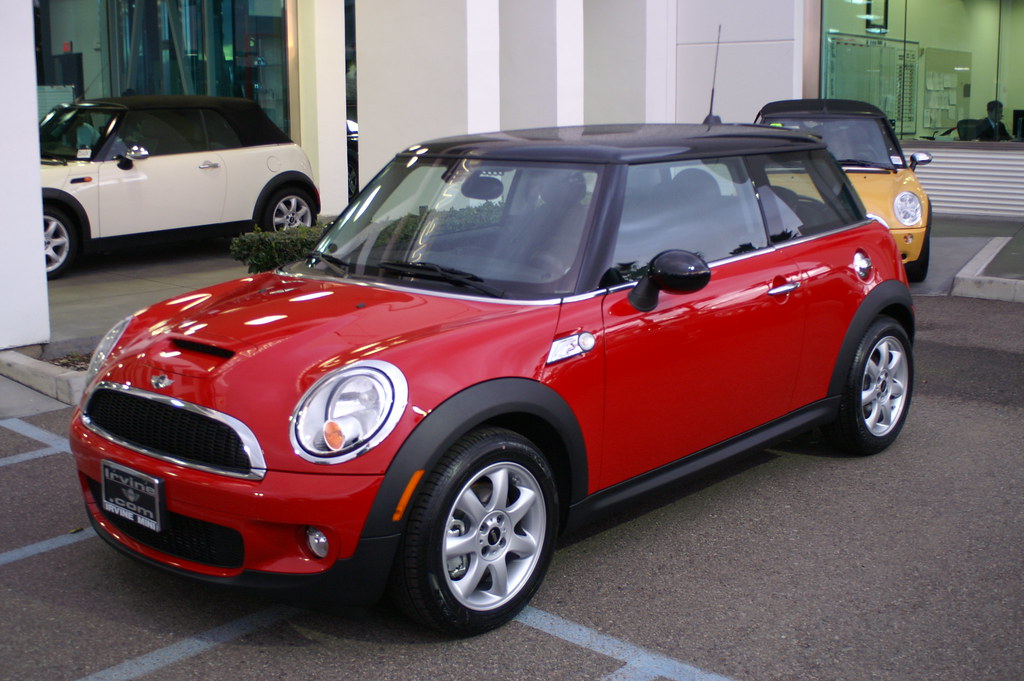
5. **Mini Cooper**The Mini Cooper has carved out a distinct niche in the automotive world, beloved for its compact, stylish design and the promise of a fun, engaging driving experience. Its go-kart-like handling and nimble maneuverability make it a joy to pilot through city streets and winding roads. Yet, the very characteristics that define its charm – its small dimensions and sporty setup – frequently mean that interior comfort takes a definite back seat, particularly when faced with the demands of longer drives or accommodating taller occupants.
The compact nature of the Mini Cooper, while contributing to its agile performance and ease of parking, can lead to a cramped feeling within the cabin, especially for taller drivers. Legroom and headroom, though surprisingly adequate for its size for average-height individuals, can become noticeably limited for those on the taller end of the spectrum. This can translate into a feeling of confinement and a less-than-ideal ergonomic setup, making it difficult to maintain comfort over extended periods behind the wheel. The car’s diminutive stature, while a boon for urban navigation, imposes clear boundaries on interior spaciousness.
Furthermore, the Mini Cooper’s firm suspension, a key component of its sporty handling and responsive feel, directly impacts ride quality. While it contributes to a more engaging and connected driving experience, it also translates to a stiffer, less cushioned ride, especially when encountering uneven road surfaces or potholes. This lack of compliance can mean that bumps and imperfections are transmitted more directly to the occupants, reducing overall comfort and making long journeys feel more jarring. Ultimately, the Mini Cooper offers a spirited and stylish drive, but it’s a vehicle where the thrill of the drive often takes precedence over the serene comfort typically desired for extended travel.
Car Model Information: 2025 MINI Countryman S
Sp: uk
Caption: 1959 Morris Mini-Minor (first one built)
Name: Mini
Aka: Austin 850,Rover Mini,Austin Cooper,Austin Mini,Austin Partner,Austin Seven,Innocenti Mini,Leyland Mini,Morris 850,Morris Mascot,Morris Mini Minor,Riley Elf,Wolseley 1000 (South Africa),Wolseley Hornet
Layout: Front-engine, front-wheel-drive layout
Manufacturer: British Motor Corporation,British Leyland,Rover Group
Production: 1959–2000 (5.38 million)
Class: City car
BodyStyle: sedan (car),convertible,Station wagon,sedan delivery,coupe utility
Engine: BMC A-series engine,Straight-four engine
Designer: Alec Issigonis,John Sheppard (car designer)
Transmission: 4-speed manual,AP automatic transmission,5-speed manual (optional extra on some later models)
Length: cvt,cvt,cvt
Width: cvt
Height: cvt
Weight: cvt
Wheelbase: cvt,cvt
Related: Mini Moke,Austin Metro,Innocenti Mini,Mini Wildgoose,Mini Marcos
Successor: Austin Metro,Mini Hatch
Assembly: Panmure, New Zealand
Categories: 1960s cars, 1970s cars, 1980s cars, 1990s cars, 2000s cars
Summary: The Mini is a very small two-door, four-seat car, produced for four decades over a single generation, with many names and variants, by the British Motor Corporation (BMC) and its successors British Leyland and the Rover Group, and finally (briefly) under BMW ownership. Minis were built as fastbacks, estates, convertibles, and various other body styles. Minus a brief 1990s hiatus, from 1959 into 2000, an estimated 5.38 million of all variations combined were built, and the Mini’s engines also powered another 2 million Mini Metros, though the Mini eventually outlasted its successor.
Initially, the Mini was marketed under the Austin and Morris names, as the Austin Seven and Morris Mini-Minor; the Austin Seven was renamed Austin Mini in 1962 and Mini became a marque in its own right in 1969. Retrospectively, the car is known as the “Classic Mini” to distinguish it from the modern MINI family of vehicles produced since 2001 by German carmaker BMW, who took ownership of the Mini name following the sale of Rover Group in 2000.
This distinctive two-door car was designed for BMC by Sir Alec Issigonis. Its space-saving transverse engine and front-wheel drive layout – allowing 80% of the area of the car’s floorpan to be used for passengers and luggage – influenced a generation of car makers. The front-wheel-drive, transverse-engine layout were used in many other “supermini” style car designs such as Honda N360 (1967), Nissan Cherry (1970), and Fiat 127 (1971). The layout was also adapted for larger subcompact designs. In 1999, the Mini was voted the second-most influential car of the 20th century, behind the Ford Model T, and ahead of the Citroën DS and Volkswagen Beetle. It is also considered an icon of 1960s British popular culture.
The Mini Mark I had three major UK updates: the Mark II, the Clubman, and the Mark III. Within these was a series of variations, including an estate car, a pick-up, a van, and the Mini Moke, a jeep-like buggy. The performance versions, the Mini Cooper and Cooper “S”, were successful as both race and rally cars, winning the Monte Carlo Rally in 1964, 1965, and 1967. The Mini was manufactured in England at the Longbridge plant in Birmingham located next to BMC’s headquarters and at the former Morris Motors plant at Cowley, as well as in Australia (Victoria Park/Zetland BMC Australia factory) and later also in Spain (Authi), Belgium, Italy (Innocenti, as the Innocenti Mini), Chile, Malta, Portugal, South Africa, Uruguay, Venezuela, and Yugoslavia (IMV). In 1980, British Leyland launched the Mini’s follow-up, the Austin Metro, however the Mini outlasted it and continued to be produced at Longbridge until October 2000.
Get more information about: Mini
Buying a high-performing used car >>>
Brand: Mini Model: Cooper
Price: $34,979 Mileage: 14,617 mi.
Read more about: Tricolor’s $200M Fraud: Unpacking the Collapse of a Subprime Auto Giant and Its Ripple Effects on US Banking
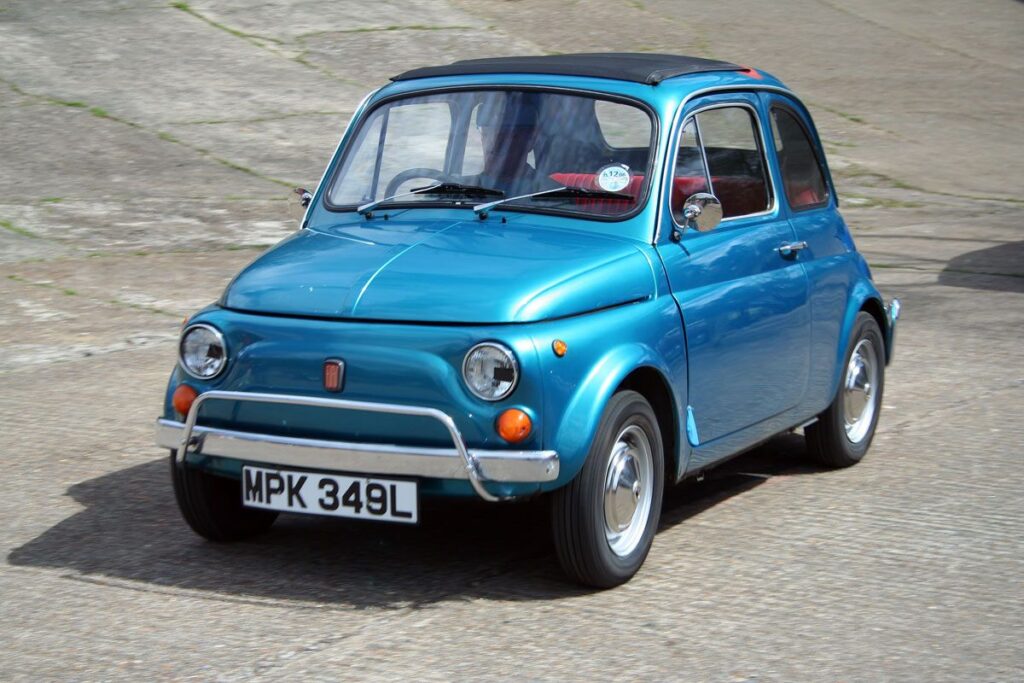
6. **Fiat 500**With its undeniable charm and distinctive retro styling, the Fiat 500 has proven to be a delightful choice for city dwellers and those who appreciate its compact footprint and whimsical appeal. Its small size makes it an agile urban navigator, capable of squeezing into tight parking spots and zipping through congested streets with ease. However, this very advantage – its diminutive dimensions – inherently necessitates compromises in interior comfort, particularly when journeys extend beyond short trips or when occupants are on the taller side.
The cramped cabin of the Fiat 500 is a frequent point of criticism. For anyone approaching or exceeding six feet in height, the interior can feel distinctly tight, presenting challenges with both legroom and headroom. This restricted space can lead to a feeling of being hemmed in, making it difficult to find a truly comfortable posture for prolonged periods. The interior, while aesthetically pleasing with its unique design elements, struggles to offer the expansive feeling or generous dimensions found in larger, more comfort-focused vehicles. The sense of confinement is a direct consequence of its ultra-compact exterior, prioritized for city maneuverability.
Additionally, the seats in the Fiat 500 are often described as being on the firmer side. While this might be acceptable for short urban commutes, they provide minimal support for long journeys, becoming a source of discomfort for both drivers and passengers alike. The lack of substantial cushioning and ergonomic shaping means that fatigue can set in quickly, diminishing the enjoyment of any extended travel. For those considering the Fiat 500, its undeniable personality and city-friendly size are strong draws, but it’s crucial to acknowledge that interior comfort, particularly on long trips, is a notable area where this charming compact car often falls short.
Car Model Information: 2012 FIAT 500 Lounge
Name: Fiat 500
Caption: 1970 Fiat 500 L
Aka: Puch 500
Manufacturer: Fiat Automobiles
Production: 1957–1975,3,893,294 units
Assembly: Turin,Desio
Designer: Dante Giacosa
Class: City car
BodyStyle: ubl
Layout: Rear-engine, rear-wheel drive layout
Doors: Suicide door,Car door#Conventional
Related: Autobianchi Bianchina,NSU/Fiat Weinsberg 500,Vignale Gamine,Autobianchi Giardiniera
Engine: Cubic centimetre,499 cc I2,594 cc I2
Transmission: Manual transmission
Wheelbase: {{convert,1840,mm,in,1,abbr=on
Abbr: on
Length: 2970 mm
Width: 1320 mm
Height: 1320 mm
Weight: 499 kg
Predecessor: Fiat 500 “Topolino”
Successor: Fiat 126,Fiat 500 (2007)
Sp: uk
Categories: 1960s cars, 1970s cars, All Wikipedia articles written in British English, All articles with unsourced statements, Articles containing Italian-language text
Summary: The Fiat 500 (Italian: Cinquecento, pronounced [ˌtʃiŋkweˈtʃɛnto]) is an economy / city car that was manufactured and marketed by Fiat Automobiles from 1957 until 1975. It was sold as a two-door semi-convertible or saloon car and as a three-door panel van or estate car.
Launched as the Nuova (new) 500 in July 1957, as a successor to the 500 “Topolino”, it was an inexpensive and practical small car. Measuring 2.97 metres (9 feet 9 inches) long, and originally powered by a rear-mounted 479 cc two-cylinder, air-cooled engine, the 500 was 24.5 centimetres (9.6 inches) smaller than Fiat’s 600, launched two years earlier, and is considered one of the first purpose-designed city cars.
In 1959, Dante Giacosa received a Compasso d’Oro industrial design prize for the Fiat 500. This marked the first time a Compasso d’Oro was awarded to an automotive manufacturer.
Get more information about: Fiat 500
Buying a high-performing used car >>>
Brand: Fiat Model: 500
Price: $5,950 Mileage: 91,698 mi.
Read more about: Buyer Beware: 8 SUVs That Are Known to Fail Frequently Before 100,000 Miles
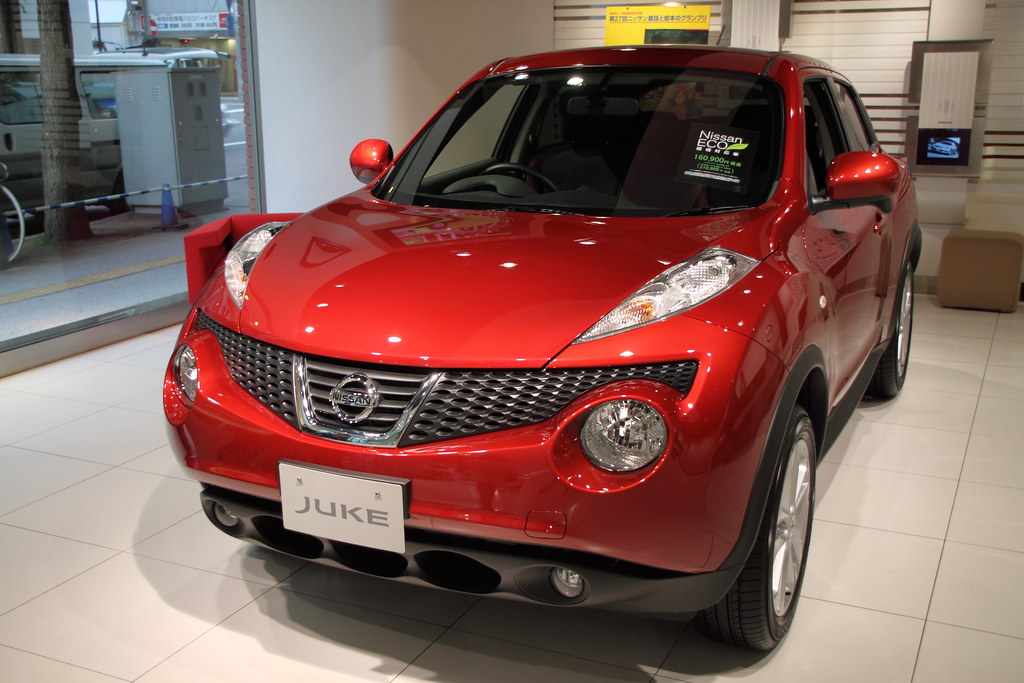
7. **Nissan Juke**The Nissan Juke, with its distinctively unconventional and ‘funky’ exterior design, certainly stands out on the road, appealing to those seeking a vehicle that breaks from traditional aesthetics. However, this unique styling approach, while visually striking, frequently comes at a noticeable cost to interior comfort, particularly for occupants in the rear.
Owners and passengers consistently report that the rear seats of the Nissan Juke are significantly tight. Limited legroom and restricted headroom make these back seats less than ideal, and often entirely unsuitable, for taller adult passengers on any journey beyond the briefest city errands. This spatial constraint can quickly transform what might otherwise be a quick trip into an uncomfortable ordeal for those relegated to the rear.
Further exacerbating the rear-seat discomfort is the Juke’s sloping roofline, a design element integral to its sporty and unique profile. This architectural choice directly reduces available headroom in the back, amplifying the sense of confinement. Beyond the rear, the entire cabin, while styled with a quirky flair, often feels generally cramped and less ergonomically thought out when compared to other crossovers available in its market segment, suggesting a prioritization of form over practical interior spaciousness.
For consumers considering the Nissan Juke, especially those who frequently travel with passengers or anticipate long journeys, these interior limitations are critical factors to evaluate. The compromise on comfort, stemming from its design-driven constraints, means that the Juke, while offering a visually distinctive ride, may not deliver the relaxed and accommodating interior experience desired for extended periods on the road.
Car Model Information: 2016 Nissan Juke S
Name: Nissan Juke
Caption: Nissan Juke (F16)
Manufacturer: Nissan
Production: 2010–present
Class: Subcompact crossover SUV
BodyStyle: Sport utility vehicle
Layout: Front-engine, front-wheel-drive layout,Front-engine, four-wheel-drive layout
Categories: 2020s cars, All-wheel-drive vehicles, All Wikipedia articles written in British English, All articles with unsourced statements, Articles containing Japanese-language text
Summary: The Nissan Juke is a subcompact crossover SUV (B-segment) produced by the Japanese car manufacturer Nissan since 2010. Debuted as a production vehicle at the 2010 Geneva Motor Show in March, it was introduced to North America at the 2010 New York International Auto Show to be sold for the 2011 model year as the smallest crossover in Nissan’s lineup prior to the introduction of the Nissan Magnite in 2020. The second-generation model was revealed for the European market in September 2019, offering larger dimensions by utilising the newer Renault–Nissan CMF-B platform. The second generation marks the withdrawal of the model from most markets outside Europe and Australasia to make way for the Nissan Kicks. The name “juke” means to “dance or change directions demonstrating agility”, and is also derived from the word “jukebox”.
Get more information about: Nissan Juke
Buying a high-performing used car >>>
Brand: Nissan Model: Juke
Price: $6,955 Mileage: 141,412 mi.
Read more about: Miles of Misery: 14 Vehicles Drivers Can’t Wait to Ditch

8. **Honda Civic (older models)**The Honda Civic has long been lauded for its reliability, fuel efficiency, and practical appeal, cementing its status as a staple for many drivers over decades. While these attributes are undeniable strengths, particularly for older generations of the model, consistent feedback from owners often highlights a notable area where these vehicles fell short: interior seating comfort, especially on longer excursions.
A common point of contention among owners of older Honda Civics was the inherent firmness of the seats. They were frequently described as having insufficient cushioning, a characteristic that, while perhaps tolerable for short urban commutes, became a significant source of discomfort on extended drives. This lack of plushness meant that the seats offered little respite for the body, leading to potential soreness and fatigue over time.
Further contributing to the comfort deficit was the absence of adjustable lumbar support in many older Civic models. Lumbar support is crucial for maintaining proper spinal alignment and reducing back strain, particularly during prolonged periods of sitting. Without this essential feature, drivers were left with limited options to tailor their seating position for optimal comfort, making it challenging to alleviate pressure and maintain an an ergonomic posture throughout long journeys.
For individuals who spend considerable time behind the wheel or frequently embark on road trips, the cumulative effect of firm seating and inadequate lumbar support in older Honda Civics can significantly diminish the driving experience. While the vehicle excelled in other practical aspects, the compromised seating comfort served as a persistent reminder that not all design choices prioritized occupant well-being during extended use.
Car Model Information: 2013 Honda Civic Si
Caption: 2024 Honda Civic liftback
Manufacturer: Honda
Aka: ubl
Production: 1972–present
Class: Subcompact car
BodyStyle: fastback,Sedan (automobile)
Layout: Front-engine, front-wheel-drive layout,Front-engine, four-wheel-drive layout
Predecessor: Honda N600,Honda Z600
Categories: 1980s cars, 1990s cars, 2000s cars, 2010s cars, 2020s cars
Summary: The Honda Civic is a series of automobiles manufactured by Honda since 1972. As of 2023, the Civic is positioned between the Honda Fit/City and Honda Accord in Honda’s global passenger car line-up. It is one of the best-selling automobiles in history, with over 27 million units sold through 2021. The first-generation Civic was introduced in July 1972 as a two-door fastback sedan, followed by a three-door hatchback that September. With a 1,169 cc transverse engine and front-wheel drive, the car provided good interior space despite its small overall dimensions. Initially gaining a reputation for being fuel-efficient, reliable and environmentally friendly, later iterations have become known for performance and sportiness, especially the Civic Si, SiR, and Type R versions. It is currently in its eleventh generation, which has been produced since 2021. The Civic has often been rebadged for international markets, and it served as the basis for the Honda CR-X, the Honda CR-X del Sol, the Concerto, the first generation Prelude, the Civic Shuttle (which later became the Orthia) and the CR-V (which in turn was used as the basis for the Honda FR-V).
Get more information about: Honda Civic
Buying a high-performing used car >>>
Brand: Honda Model: Civic
Price: $11,000 Mileage: 150,876 mi.
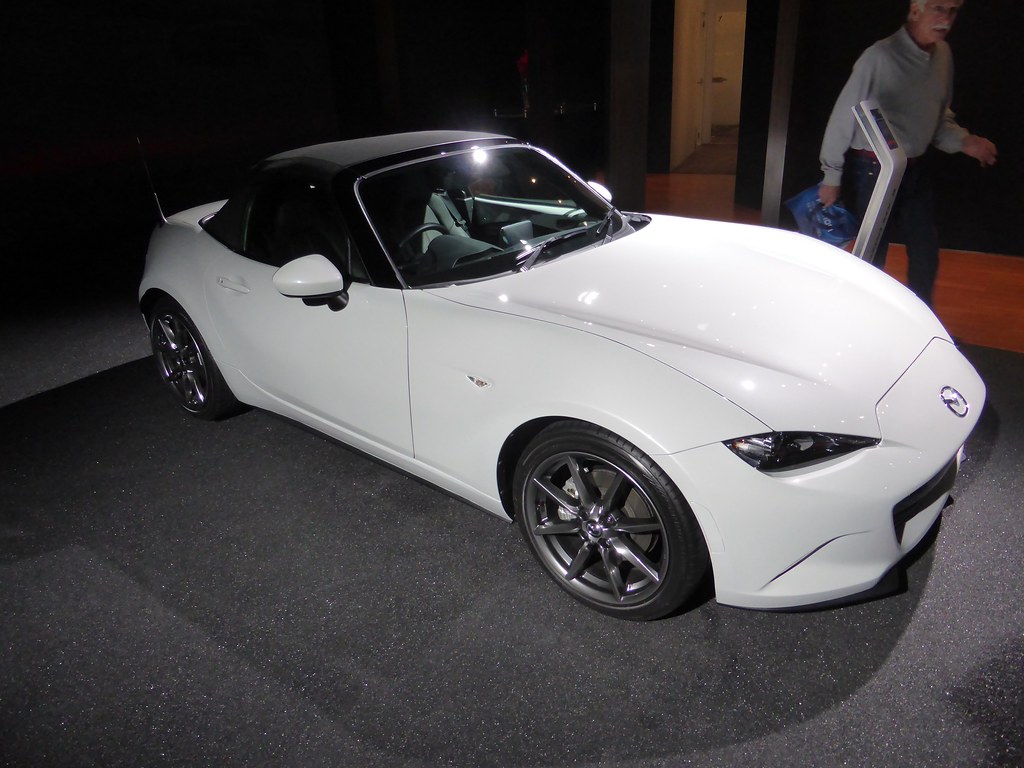
9. **Mazda MX-5 Miata**The Mazda MX-5 Miata enjoys an almost legendary status among automotive enthusiasts, celebrated globally for its exhilarating, ‘fun-to-drive’ dynamics and agile handling. This two-seater roadster is engineered to provide a pure, unadulterated connection between driver and road. However, inherent in its design philosophy—prioritizing lightweight construction and compact dimensions for optimal performance—is a trade-off that often impacts interior comfort.
The Miata’s tiny cabin, a direct consequence of its compact footprint, is frequently cited as a significant comfort challenge, particularly for taller drivers. Limited legroom and shoulder room create a sensation of being decidedly cramped, making it difficult for some occupants to find a truly relaxed or ergonomic driving position. This spatial constraint, while contributing to the car’s ‘connected’ feel, can become increasingly noticeable and fatiguing on longer journeys.
Adding to the interior’s comfort shortcomings are the Miata’s seats. While designed to be supportive during spirited driving, holding occupants firmly in place during cornering, they are consistently described as firm and feature minimal padding. This design choice, beneficial for conveying road feel and reducing weight, means that the seats offer little cushioning for extended periods. Consequently, what might be an invigorating drive for a short burst can quickly evolve into discomfort due to pressure points and a lack of overall plushness during longer rides.
For buyers drawn to the Mazda MX-5 Miata’s undeniable charm and performance prowess, it is crucial to recognize that interior comfort, especially for larger individuals or during prolonged travel, is not its primary strength. The car delivers an exceptional driving experience, but it asks its occupants to accept a more intimate and less yielding cabin environment in return for its celebrated agility and responsiveness.
Car Model Information: 2021 Nissan Rogue SL
Name: Mazda MX-5
Manufacturer: Mazda
Aka: unbulleted indent list
Production: 1989–present
Assembly: Hiroshima
Class: Roadster (car),sports car
Layout: unbulleted indent list
Platform: List of Mazda model codes#Model codes
Categories: 1990s cars, 2000s cars, 2010s cars, 2020s cars, All Wikipedia articles in need of updating
Summary: The Mazda MX-5 is a lightweight two-seat sports car manufactured and marketed by Mazda. In Japan, it is marketed as the Mazda Roadster or, previously, as the Eunos Roadster. In the United States it is sold as the Mazda Miata (), and it was formerly marketed under the same name in Canada. The name miata derives from Old High German for “reward”.
Produced at Mazda’s Hiroshima plant, the MX-5 debuted in 1989 at the Chicago Auto Show. It was created under the design credo Jinba ittai, meaning “unity of horse and rider”. Noted for its small, light, balanced and minimalist design, the MX-5 has often been described as a successor to the 1950s and 1960s Italian and British roadsters, with the Lotus Elan serving as a design benchmark.
Each generation is identified by a two-letter code, beginning with the first generation NA. The second generation NB launched in 1998, followed by the third generation NC in 2005, and the fourth generation ND in 2015.
More than one million MX-5s have been sold, making it the best-selling two-seat convertible sports car in history.
Get more information about: Mazda MX-5
Buying a high-performing used car >>>
Brand: Mazda Model: MX-5 Miata
Price: $20,995 Mileage: 117,217 mi.
Read more about: Buyer Warning: 9 Sports Cars That Become Reliability Nightmares Before 50,000 Miles
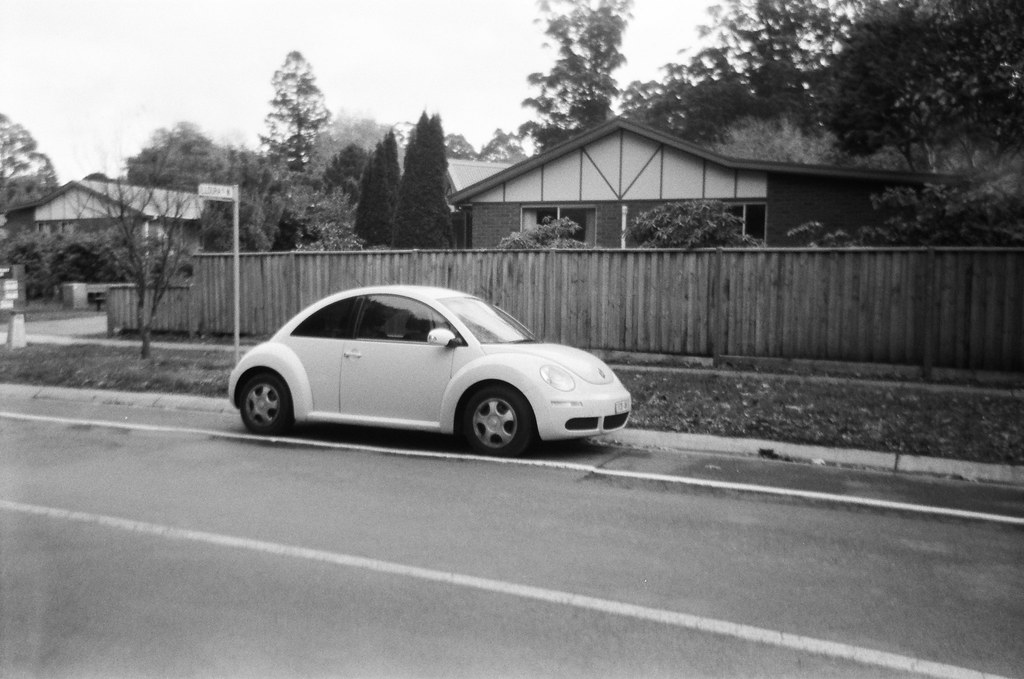
10. **Volkswagen Beetle**The Volkswagen Beetle holds a unique place in automotive history, recognized instantly by its iconic, quirky, and retro styling. Its distinctive shape and cultural significance have attracted a loyal following for decades, offering a charming alternative to more conventional vehicles. Yet, this very ‘classic’ design, while central to its appeal, introduced inherent limitations that profoundly affected interior comfort, particularly for backseat passengers.
A primary area of compromise in the classic Volkswagen Beetle’s interior comfort lies squarely in its rear seating. The vehicle’s characteristic curved roofline and compact dimensions drastically limited both legroom and headroom in the back. This design choice effectively rendered the rear seats largely impractical and uncomfortable for adult passengers, relegating them to an auxiliary role suitable only for very short trips or perhaps small children. The emphasis was clearly on the front occupants, with the rear being a secondary, rather than primary, consideration.
Beyond the spatial constraints, the seats themselves, while functional, often lacked the ergonomic sophistication and plushness found in more contemporary or comfort-focused vehicles. The quirky styling, while charming, didn’t translate into advanced seating dynamics or ample cushioning. This meant that the seats offered basic support but little in the way of long-term comfort, contributing to fatigue on any journey of significant duration. The Beetle’s interior prioritized its unique aesthetic over modern comfort standards.
The overall interior space of the Volkswagen Beetle felt constrained, a direct outcome of its design which maximized its exterior personality. For drivers and passengers accustomed to the more generous and ergonomically advanced interiors of modern cars, the Beetle’s cabin, while undeniably distinctive, often felt outdated in terms of practical comfort and spaciousness. Prospective owners prioritizing a relaxed and accommodating interior for all passengers, especially on longer drives, would need to weigh the Beetle’s iconic charm against its inherent comfort limitations.
Car Model Information: 1964 Volkswagen Beetle (Pre-1980) Base
Sp: uk
Name: Volkswagen Type 1,”Beetle”
Caption: 1965–1966 Volkswagen Käfer
Manufacturer: Volkswagen
Alt: A front-three quarters view of a pale-yellow Volkswagen Käfer. It features 165/80R15 tires, which shod 15×4. 5″ silver, circular wheels. The Käfer features a beetle-like body, and its window is open. The picture is taken with much greenery in the background, and the photo was edited to give it a more warmer tone.
Aka: List of names for the Volkswagen Type 1
Assembly: #Markets and assembly
Designer: Ferdinand Porsche
Class: Small family car
BodyStyle: Sedan (automobile),convertible
Production: 1938–2003,21,529,464 produced
Successor: Volkswagen Golf Mk1,Volkswagen Gol#First generation (Typ30, 1980),Volkswagen New Beetle
Layout: Rear-engine, rear-wheel-drive layout
Engine: Petrol,Volkswagen air-cooled engine,1192 cc H4,1285 cc H4,1493 cc H4,1584 cc H4
Transmission: manual transmission,Saxomat,Autostick
Wheelbase: convert
Length: convert
Width: convert
Height: 1500 mm
Abbr: on
Weight: convert
Categories: 1940s cars, 1950s cars, 1960s cars, 1970s cars, 1980s cars
Summary: The Volkswagen Beetle, officially the Volkswagen Type 1, is a small family car produced by the German company Volkswagen from 1938 to 2003. A global cultural icon known for its bug-like design, the Beetle is widely regarded as one of the most influential cars of the 20th century. Its production period of 65 years is the longest for any single generation of automobile, and its total production of 21.5 million units makes it the most produced car of a single platform in history and the second-highest of all nameplates manufactured in the 20th century.
The Beetle was conceived in the early 1930s. The leader of Nazi Germany, Adolf Hitler, decided there was a need for a people’s car—an inexpensive, simple, mass-produced car—to serve Germany’s new road network, the Reichsautobahn. The German engineer Ferdinand Porsche and his design team began developing and designing the car in the early 1930s, but the fundamental design concept can be attributed to Béla Barényi in 1925, predating Porsche’s claims by almost ten years. The result was the Volkswagen Type 1 and the introduction of the Volkswagen brand. Volkswagen initially slated production for the late 1930s, but the outbreak of war in 1939 meant that production was delayed until the war had ended. The car was originally called the Volkswagen Type 1 and marketed simply as the Volkswagen. It was not until 1968 that it was officially named the “Beetle”.
Volkswagen implemented designations for the Beetle in the 1960s, including 1200, 1300, 1500, 1600, 1302, and 1303. Volkswagen introduced a series of large luxury models throughout the 1960s and 1970s—comprising the Type 3, Type 4 and K70—to supplement the Beetle, but none of these models achieved the level of success that it did. In 1972, it became the best-selling car of all time, a position it retained for nearly three decades. Rapidly changing consumer preferences toward front-wheel drive compact hatchbacks in Europe prompted Volkswagen’s gradual shift away from rear-wheel drive, starting with the Golf in 1974. In the late 1970s and ’80s, Japanese automakers dominated some markets around the world, which contributed to the Beetle’s declining popularity.
The Beetle remains one of the best-selling cars of all time and is the first to sell over 20 million units. Over its lifespan, its design remained consistent, yet Volkswagen implemented over 78,000 incremental updates. These modifications were often subtle, involving minor alterations to its exterior, interior, colours, and lighting. Some more noteworthy changes included the introduction of new engines, models and systems, such as improved technology or comfort. The Beetle maintains a substantial cultural influence and is regarded as one of the most iconic vehicles in automotive history; its success largely influenced the way automobiles are designed and marketed, and propelled Volkswagen’s introduction of a Golf-based series of vehicles.
Get more information about: Volkswagen Beetle
Buying a high-performing used car >>>
Brand: Volkswagen Model: Beetle
Price: $34,997 Mileage: 669 mi.
Read more about: 15 Classic Cars You Might Want To Skip: An Expert Guide for Discerning Collectors
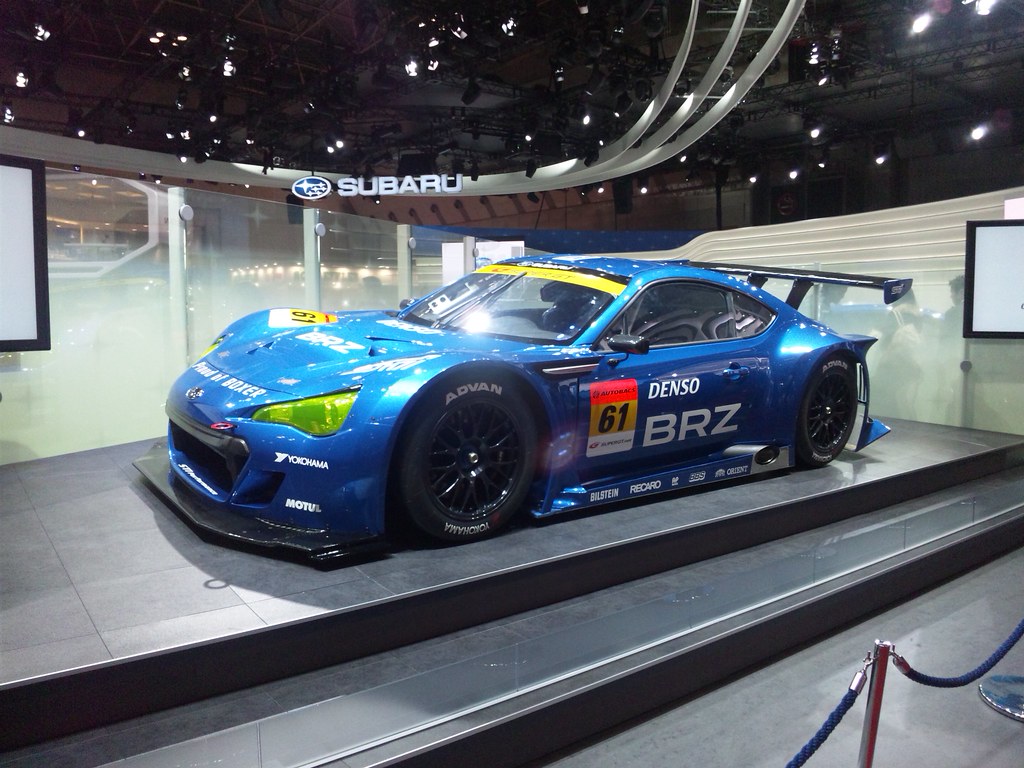
11. **Subaru BRZ**The Subaru BRZ, along with its Toyota 86 counterpart, is celebrated as a pure driver’s car, meticulously engineered to deliver an engaging and precise sports car experience. Its lightweight construction, rear-wheel-drive platform, and low center of gravity are all aimed at maximizing performance and handling agility. Naturally, when a vehicle is so singularly focused on delivering a thrilling drive, concessions are often made in other areas, and interior comfort is frequently among them.
The BRZ’s identity as a sporty, lightweight coupe directly translates into a tight cabin space. While the front seats are purpose-built for the driver and co-pilot, the rear seating area is notably constrained. This minimal rear space significantly limits passenger comfort, rendering it largely unsuitable for adult occupants on anything but the absolute shortest, most infrequent trips. For families or individuals requiring practical seating for more than two, the BRZ’s rear cabin proves to be an inherent limitation.
The seats themselves underscore the BRZ’s performance-first philosophy. They are firm and aggressively bolstered, designed to hold occupants securely in place during high-G cornering and dynamic maneuvers. While excellent for spirited driving, this firmness and pronounced bolstering can quickly become uncomfortable during long trips or routine daily commuting. The minimal cushioning and rigid structure, optimized for track-day readiness, are less forgiving for the extended periods of sitting required on a road trip or during a prolonged traffic jam.
Ultimately, the Subaru BRZ offers an exhilarating and rewarding driving experience for enthusiasts. However, for those seeking a vehicle that blends sporty performance with a high degree of interior comfort for regular, long-distance travel, the BRZ presents a clear trade-off. Its tight cabin, minimal rear space, and performance-oriented firm seating position it as a specialized machine where the thrill of the drive undeniably takes precedence over the serene comfort typically desired for daily versatility or extended journeys.
Car Model Information: 2017 Subaru BRZ Series.Yellow
Name: Toyota 86 / Subaru BRZ
Caption: 2022 Toyota GR86 Premium (ZN8)
Manufacturer: Toyota
Aka: unbulleted list
Production: January 2012 – present
ModelYears: 2013–present
Assembly: Ōta, Gunma
Class: Sports car
BodyStyle: fastback,coupé
Layout: Front-engine, rear-wheel-drive
Sp: uk
Categories: 2+2 coupés, 2020s cars, All Wikipedia articles written in British English, All articles with dead external links, All articles with unsourced statements
Summary: The Toyota 86 and the Subaru BRZ are 2+2 sports cars jointly developed by Toyota and Subaru, manufactured at Subaru’s Gunma assembly plant.
The 2+2 fastback coupé has a naturally aspirated boxer engine, front-engined, rear-wheel-drive configuration, 53/47 front/rear weight balance and low centre of gravity; it was inspired by Toyota’s earlier AE86, a small, light, front-engine/rear-drive Corolla variant widely popular for Showroom Stock, Group A, Group N, Rally, Club and drift racing.
For the first-generation model, Toyota marketed the sports car as the 86 in Asia, Australia, North America (from August 2016), South Africa, and South America; as the Toyota GT86 in Europe; as the 86 and GT86 in New Zealand; as the Toyota FT86 in Brunei, Nicaragua and Jamaica and as the Scion FR-S (2012–2016) in the United States and Canada.
The second-generation model is marketed by Toyota as the GR86 as part of the Gazoo Racing family.
Get more information about: Toyota 86
Buying a high-performing used car >>>
Brand: Subaru Model: BRZ
Price: $21,747 Mileage: 54,658 mi.
Read more about: Redefining Speed and Savings: 10 Sports Cars That Master 30 MPG Highway
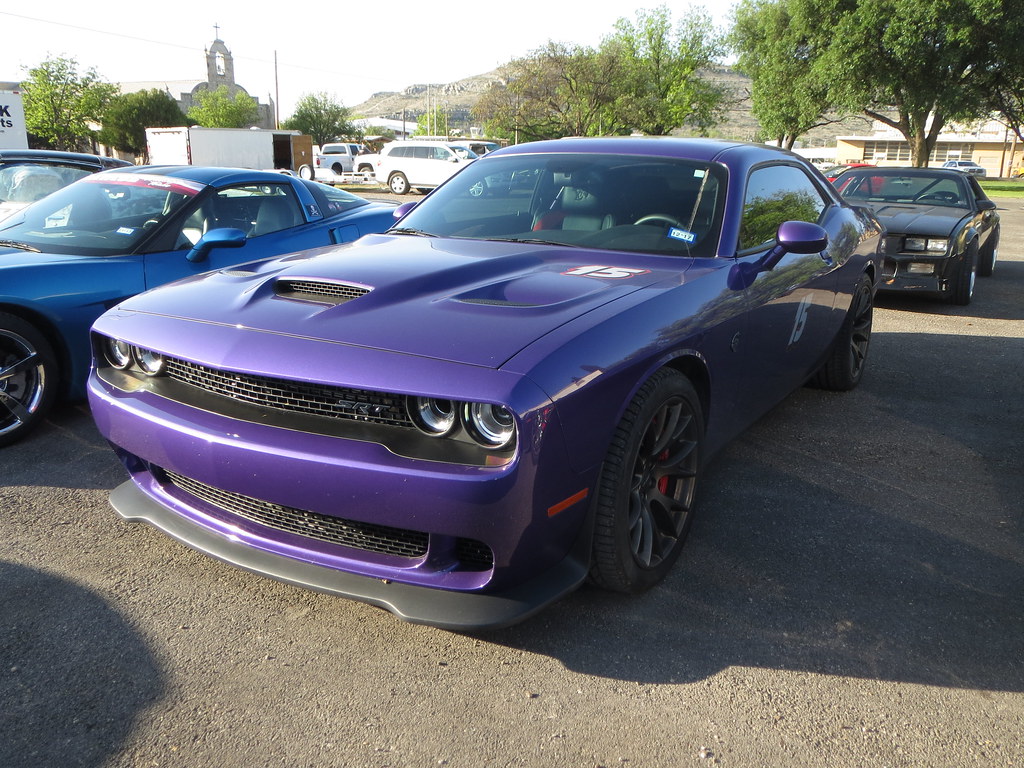
12. **Dodge Challenger**The Dodge Challenger projects an undeniable image of raw American muscle, characterized by its imposing, muscular exterior and powerful engine options. Its substantial physical presence on the road suggests a vehicle with ample interior space and comfort. However, a closer examination reveals that despite its considerable external dimensions, the Challenger harbors some surprising limitations when it comes to interior comfort, particularly for passengers beyond the front two.
A frequently cited issue concerns the Challenger’s rear seats. Despite the car’s generous length and width, the rear passenger compartment offers surprisingly tight accommodations. Legroom, in particular, is notably restricted, making it genuinely uncomfortable for adult backseat passengers on any journey of significant duration. This spatial paradox—a large car with a cramped rear—means that the Challenger, while outwardly imposing, struggles to provide comfortable seating for a full complement of passengers on extended trips.
Even the front seats, while generally more accommodating than the rear, are not without their comfort-related critiques. They are often described as feeling stiff and notably lacking sufficient cushioning for long-distance travel. While they provide adequate support for shorter, spirited drives, the absence of softer padding and more adaptive ergonomics can lead to discomfort and fatigue on prolonged journeys. This characteristic requires drivers and front passengers to take more frequent breaks to maintain comfort on road trips.
For individuals drawn to the Dodge Challenger for its iconic styling, powerful performance, and cruising appeal, it is important to factor in these interior comfort considerations. While it excels as a statement vehicle and a performance machine, the compromises in rear-seat space and the firmness of the front seats mean that long-distance touring, especially with multiple occupants, might not be as enjoyable or relaxing as its grand exterior might suggest.
Car Model Information: 2013 Dodge Challenger SXT
Name: Dodge Challenger
Production: 1969–1974,1977–1983,2008–2023
ModelYears: 1970–1974,1978–1983,2008–2023
Caption: 2015 Dodge Challenger SRT Hellcat
Manufacturer: Dodge
Categories: 1970s cars, 1980s cars, 2000s cars, 2010s cars, 2020s cars
Summary: The Dodge Challenger is the name of three generations of automobiles produced by the American automobile manufacturer Dodge. However, the first use of the Challenger name by Dodge dates back to 1959 for marketing a “value version” of the full-sized Coronet Silver Challenger.
From model years 1970 to 1974, the first-generation Dodge Challenger pony car was built using the Chrysler E platform in hardtop and convertible body styles sharing significant components with the Plymouth Barracuda.
The second generation, from model years 1978 to 1983, was a rebadged Mitsubishi Galant Lambda / Sapporo, a coupe version of an economical compact car.
The third and current generation is a full-size muscle car that was introduced in early 2008 initially as a rival to the evolved fifth generation Ford Mustang and the fifth generation Chevrolet Camaro.
In November 2021, Stellantis announced that the 2023 model year would be the final model year for both the LD Dodge Charger and LA Dodge Challenger, as the company will focus its plans on electric vehicles rather than fossil fuel-powered vehicles, due to tougher emissions standards required by the Environmental Protection Agency for the 2023 model year. Challenger production ended on December 22, 2023, and the Brampton, Ontario, assembly plant will be re-tooled to assemble an electrified successor.
Get more information about: Dodge Challenger
Buying a high-performing used car >>>
Brand: Dodge Model: Challenger
Price: $14,419 Mileage: 60,710 mi.
Read more about: From Anemic to Awkward: Unmasking 15 Muscle Cars That Truly Missed the Mark – And Why We Can’t Forget Them
While the allure of a car’s horsepower, cutting-edge technology, or striking appearance often dominates initial buying decisions, the true test of ownership comfort unfolds over time and mileage. As our exploration of these twelve vehicles demonstrates, a car’s interior design and material quality are paramount to long-term satisfaction. From compact urban warriors to powerful muscle cars, the balance between aesthetics, performance, and pragmatic comfort often reveals unexpected shortcomings. Understanding these specific interior challenges—from cramped legroom and firm seating to pervasive cabin noise—empowers consumers to look beyond superficial appeal. It encourages a deeper evaluation of how a vehicle’s cabin will truly perform under the rigors of daily use and extended travel, ensuring that the chosen ride remains a source of comfort and enjoyment, rather than a recurring nightmare, for years to come. Making an informed decision means prioritizing an interior that stands the test of time and miles, delivering the solace and support essential for every journey.


